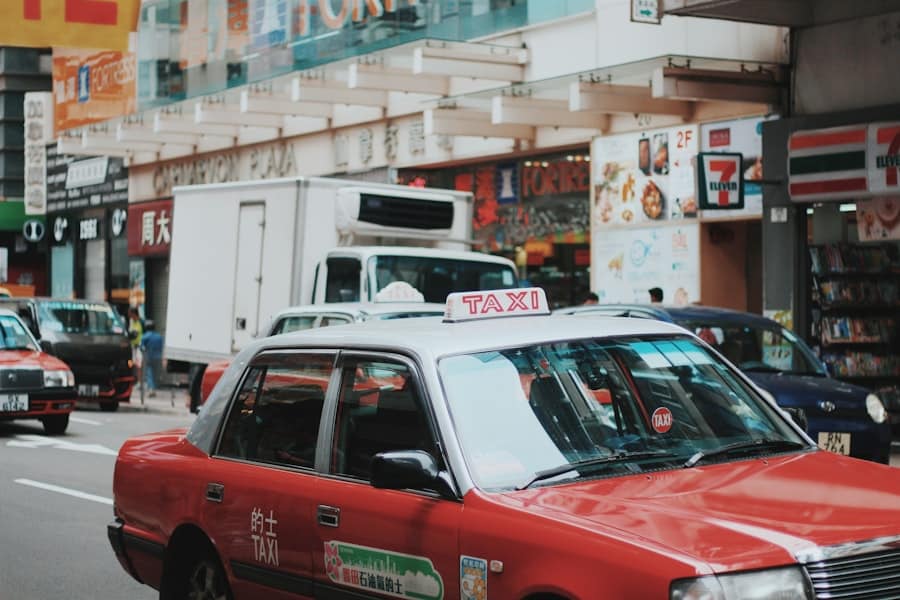Urban Air Mobility (UAM) represents a transformative shift in how we envision transportation within densely populated areas. As cities continue to grow, the challenges of congestion, pollution, and inefficiency in traditional ground-based transport systems become increasingly pronounced. UAM seeks to address these issues by introducing aerial vehicles that can operate in urban environments, providing a new layer of mobility that is not constrained by the limitations of road networks.
This concept encompasses a range of technologies, including electric vertical takeoff and landing (eVTOL) aircraft, air taxis, and, notably, drones. The integration of these aerial vehicles into urban landscapes promises to revolutionize not only personal transport but also logistics, emergency services, and public safety. The potential benefits of UAM are vast.
By utilizing the airspace above cities, these systems can alleviate traffic congestion on the ground, reduce travel times, and offer a more sustainable alternative to traditional transportation methods. As urban populations continue to swell, the demand for innovative solutions to mobility challenges becomes critical. Drones, in particular, have emerged as a key player in this arena, offering unique capabilities that can enhance urban transport systems.
Their ability to navigate complex environments and deliver goods or services quickly makes them an attractive option for both commercial and personal use.
Key Takeaways
- Urban Air Mobility (UAM) and Transport is a growing field that aims to revolutionize urban transportation using drones and other aerial vehicles.
- Drones play a crucial role in UAM by providing efficient and cost-effective solutions for transporting goods and people in urban areas.
- Using drones for urban transport offers advantages such as reducing traffic congestion, lowering carbon emissions, and improving delivery times.
- However, challenges and limitations of using drones for UAM include safety concerns, airspace regulations, and public acceptance.
- Current and future applications of drones in urban air transport include medical supply delivery, traffic monitoring, and passenger transportation, with potential for further expansion in the future.
The Role of Drones in Urban Air Mobility
Drones are at the forefront of the Urban Air Mobility revolution, serving as versatile tools that can be adapted for various applications. These unmanned aerial vehicles (UAVs) are equipped with advanced technologies such as GPS navigation, obstacle detection systems, and autonomous flight capabilities, allowing them to operate safely in urban environments. Their small size and agility enable them to maneuver through tight spaces and avoid obstacles, making them ideal for tasks that require precision and speed.
In the context of UAM, drones can be employed for a multitude of purposes, including package delivery, medical supply transport, aerial surveillance, and even passenger transport in the form of air taxis. One of the most promising aspects of drones in UAM is their potential for on-demand services. Companies like Zipline have already demonstrated the effectiveness of drone delivery systems in remote areas by transporting medical supplies to hospitals and clinics.
This model can be expanded to urban settings where time-sensitive deliveries are crucial. For instance, imagine a scenario where a drone delivers a critical medication to a patient in need within minutes, bypassing traffic congestion entirely. Furthermore, drones can be integrated into existing logistics networks, enhancing last-mile delivery solutions and reducing the burden on ground transportation systems.
Advantages of Using Drones for Urban Transport

The advantages of incorporating drones into urban transport systems are manifold. First and foremost is the significant reduction in travel time. Drones can fly directly from point A to point B without being hindered by traffic jams or road closures.
This capability is particularly beneficial for emergency services; for example, a drone equipped with medical supplies can reach an accident scene far more quickly than an ambulance stuck in traffic. The speed at which drones can operate not only enhances service delivery but also has the potential to save lives in critical situations. Another key advantage is the environmental impact of drone technology.
Many drones are designed to be electric-powered, which means they produce zero emissions during operation.
By shifting some transportation needs from ground vehicles to aerial drones, cities can decrease their overall greenhouse gas emissions and improve air quality.
Additionally, drones can help reduce noise pollution compared to traditional helicopters or other aircraft, making them more suitable for urban environments where noise regulations are stringent.
Challenges and Limitations of Using Drones for Urban Air Mobility
Despite their numerous advantages, the deployment of drones in urban air mobility is not without challenges. One significant hurdle is the issue of airspace management. Urban environments are characterized by complex airspace structures that include commercial air traffic, private flights, and various other aerial activities.
Integrating drones into this existing framework requires sophisticated air traffic management systems capable of ensuring safe operations while preventing collisions between manned and unmanned aircraft. The development of such systems is still in its infancy and poses a considerable challenge for regulators and industry stakeholders alike. Another limitation is the technological constraints associated with drone operations.
While advancements have been made in battery technology and flight endurance, many drones still face restrictions regarding flight time and payload capacity. For instance, most commercial drones have limited battery life, which restricts their range and operational capabilities.
Additionally, adverse weather conditions such as high winds or heavy rain can significantly impact drone performance and safety, necessitating robust contingency plans for operations during inclement weather.
Current and Future Applications of Drones in Urban Air Transport
Currently, drones are being utilized in various capacities within urban settings, primarily focusing on logistics and delivery services. Companies like Amazon Prime Air and Google’s Wing are actively testing drone delivery systems that aim to provide rapid package delivery directly to consumers’ doorsteps. These pilot programs have shown promising results in terms of efficiency and customer satisfaction.
Furthermore, drones are being employed for infrastructure inspections, allowing city planners and maintenance crews to assess bridges, buildings, and other structures without the need for scaffolding or extensive ground-based equipment. Looking ahead, the future applications of drones in urban air transport are poised to expand significantly. One exciting prospect is the development of passenger-carrying drones or air taxis that could revolutionize urban commuting.
Companies such as Joby Aviation and Volocopter are actively working on eVTOL aircraft designed for short-distance travel within cities. These vehicles could provide an alternative mode of transport for commuters seeking to avoid congested roadways. Additionally, drones could play a vital role in disaster response scenarios by delivering supplies or conducting search-and-rescue operations in areas that are difficult to access by ground vehicles.
Regulatory and Safety Considerations for Drone Use in Urban Areas

The successful integration of drones into urban air mobility hinges on comprehensive regulatory frameworks that prioritize safety while fostering innovation. Regulatory bodies such as the Federal Aviation Administration (FAA) in the United States are actively working on establishing guidelines for drone operations in urban environments. These regulations encompass various aspects, including flight altitude restrictions, no-fly zones near airports or sensitive areas, and requirements for remote pilot certification.
Ensuring compliance with these regulations is essential for maintaining public safety and building trust among urban residents regarding drone operations. Safety considerations extend beyond regulatory compliance; they also involve technological advancements aimed at minimizing risks associated with drone flights. For instance, implementing fail-safe mechanisms such as automatic return-to-home features or geofencing capabilities can help prevent accidents caused by pilot error or technical malfunctions.
Additionally, ongoing research into collision avoidance systems will be crucial as drone traffic increases in urban airspace. The development of robust safety protocols will not only protect individuals on the ground but also ensure the safe operation of drones alongside traditional aircraft.
The Impact of Drones on Urban Infrastructure and Transportation Systems
The introduction of drones into urban air mobility will inevitably reshape existing infrastructure and transportation systems within cities. As drone operations become more prevalent, cities may need to develop designated takeoff and landing zones or “vertiports” strategically located throughout urban areas. These facilities would serve as hubs for drone operations, facilitating efficient passenger boarding or package drop-offs while minimizing disruption to existing traffic patterns.
Moreover, the integration of drones into urban transport systems could lead to a reevaluation of current logistics networks. Traditional delivery methods may need to adapt to accommodate drone technology, potentially resulting in a shift away from reliance on ground-based vehicles for last-mile deliveries. This transformation could alleviate congestion on city streets while enhancing overall efficiency in supply chain management.
As cities embrace this new mode of transport, urban planners will need to consider how best to integrate drone operations into existing transportation frameworks while ensuring accessibility for all residents.
The Future of Urban Air Mobility with Drones
The future of Urban Air Mobility is undeniably intertwined with the evolution of drone technology. As advancements continue to emerge in both hardware and software capabilities, the potential applications for drones within urban environments will expand exponentially. From revolutionizing logistics to providing innovative solutions for personal transport, drones hold the promise of transforming how we navigate our cities.
However, realizing this vision requires collaboration among stakeholders across various sectors—government agencies, private companies, and communities must work together to address regulatory challenges while prioritizing safety and public acceptance. As we move forward into this new era of transportation, it is essential to remain mindful of the implications that drones will have on urban life and infrastructure. With careful planning and strategic implementation, drones could become an integral part of our daily commutes and logistics networks, paving the way for a more efficient and sustainable future in urban air mobility.
A related article to How Drones Are Being Used for Urban Air Mobility and Transport can be found in this article which discusses the best laptops for video and photo editing. As technology continues to advance, the need for powerful laptops capable of handling demanding tasks like editing high-resolution videos and photos is becoming increasingly important. This article provides valuable insights into the top laptops available for professionals in the creative industry.
FAQs
What is urban air mobility (UAM) and transport?
Urban air mobility (UAM) and transport refers to the use of drones and other aerial vehicles for transportation within urban areas. This can include passenger transport, cargo delivery, and other aerial services.
How are drones being used for urban air mobility and transport?
Drones are being used for urban air mobility and transport in various ways, including passenger transport, medical supply delivery, package delivery, and surveillance. Companies are developing and testing drone technology to provide efficient and sustainable transportation solutions for urban areas.
What are the benefits of using drones for urban air mobility and transport?
Using drones for urban air mobility and transport can help reduce traffic congestion, lower carbon emissions, and provide faster and more efficient transportation options. Drones can also reach areas that are difficult to access by traditional ground transportation.
What are the challenges of implementing drones for urban air mobility and transport?
Challenges of implementing drones for urban air mobility and transport include regulatory hurdles, safety concerns, public acceptance, and infrastructure development. Ensuring the safe integration of drones into urban airspace is a key challenge for the industry.
What are some examples of companies working on urban air mobility and transport using drones?
Several companies, including Uber, Boeing, Airbus, and Volocopter, are actively developing and testing drone technology for urban air mobility and transport. These companies are working on passenger-carrying drones, cargo delivery drones, and other aerial transportation solutions.

